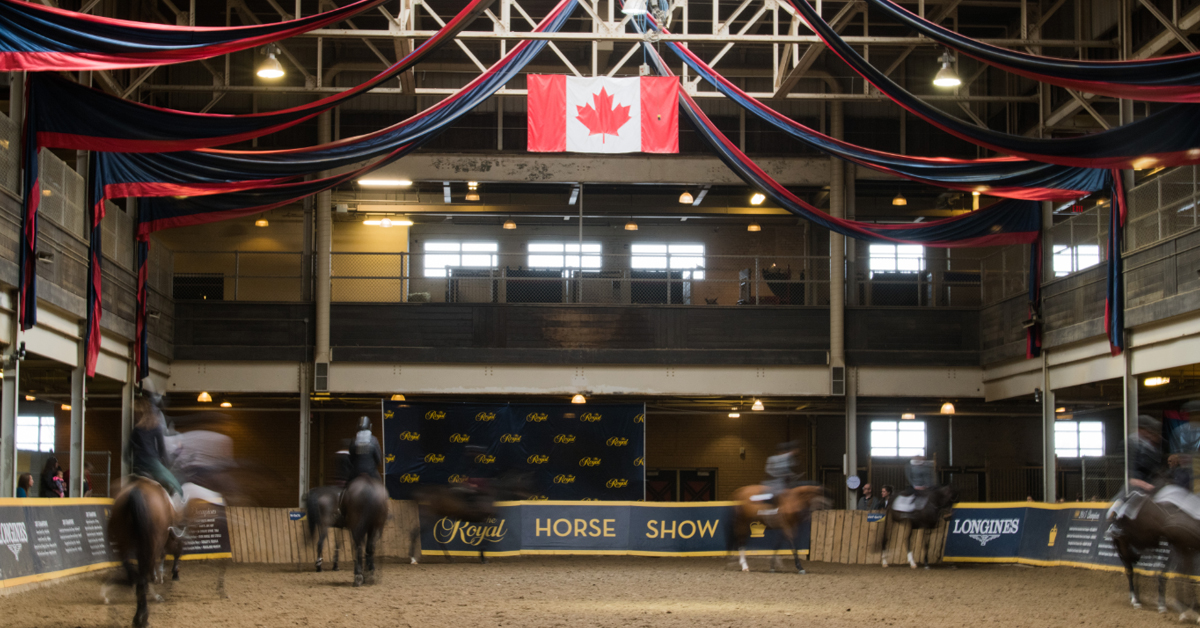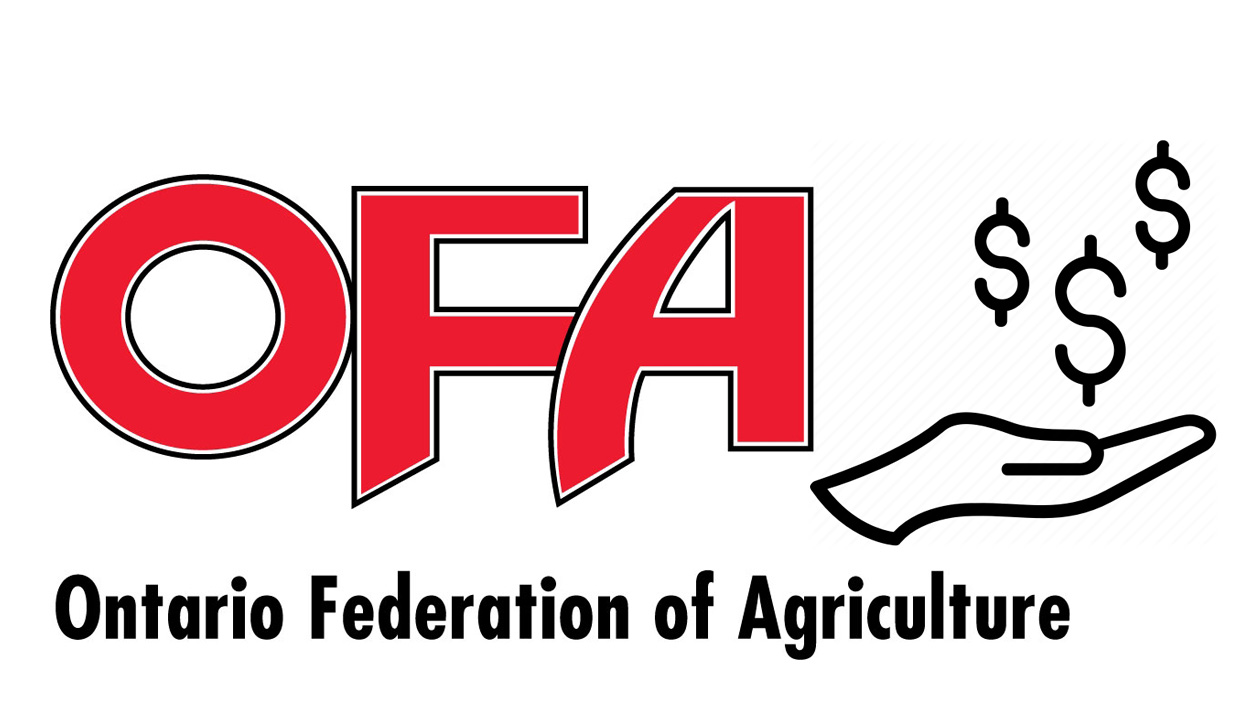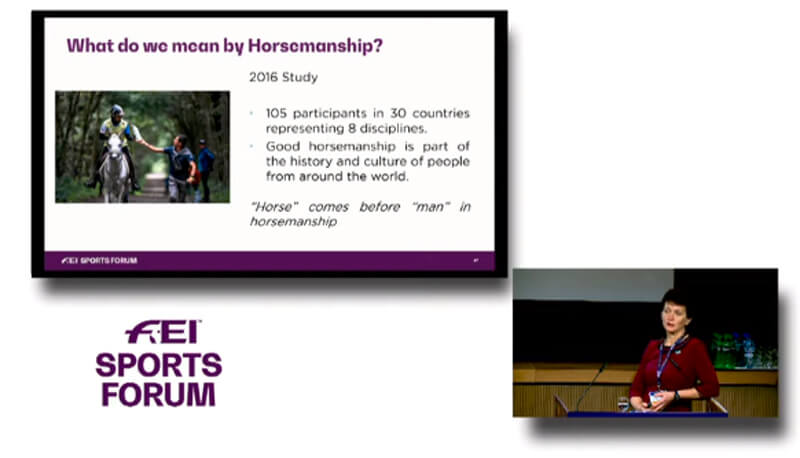A complete change in mind-set is at the heart of the endurance reforms presented at the FEI Sports Forum earlier this week.
New measures will require horses and riders to upgrade by demonstrating consistency, with speeds capped at 18kph until they reach a 66% completion rate. This will force a radically new outlook on the younger generation, few of whom have experienced the slower-paced, classic form of endurance. If passed, the new rules will also seriously impact on the practice of racing “strange” horses at the upper levels – the norm in desert endurance.
This and other moves – notably curtailment of mobile crewing, breaking up “cliques” of officials, and emphasis on the horse-rider partnership – are likely to meet resistance from the FEI Group 7 countries (Middle East) in months to come.
The UAE owns or administers 5,403 (56.2%) of the global population of 9,612 endurance horses currently registered with the FEI. At the end of the debates, the Emirati federation’s secretary-general Dr Ghanem Alhajri made an impassioned speech about the likely economic impact of the changes, and their capacity to “punish” by default the owners who invest.
He felt the proposals were based on very limited factors – notably the FEI’s Global Equine Injuries Study (GEIS) – and would drive more riders towards national rides, to escape FEI jurisdiction; 80% of riders would unfairly be denied doing the sport they loved because of the bad behaviour of 20%, he said.
But Dr Sarah Coombs, chair of the FEI’s endurance temporary committee, reminded him the FEI code of conduct puts horse welfare first: “If there is a compromise to be made on the competition aspects and the commercial aspects, so be it, I would say.”
FEI president Ingmar de Vos told Horse-Canada.com he was confident the new measures would be supported by National Federations at the General Assembly in November.
Earlier, Mr de Vos said reform is non-negotiable: “Endurance is and will continue to be an FEI discipline. Not only because we are the sole governing body, and as such we need to take our responsibilities, but also because it has great potential and a big future in the FEI, but not as it currently exists.
“This is a ride – not a race. Horsemanship and the unique bond between horse and rider is key. If you don’t respect these values, go somewhere else.”
The future of endurance occupied the entire second day of this annual multi-discipline gathering in Lausanne, Switzerland. As well as stakeholders, the endurance debates were attended by a smattering of delegates from other disciplines. The lack of interface between FEI disciplines was often evident. Even some on the top table apparently failed to recognise Juma Punti Dachs in the audience: the 2016 world champion and himself a former FEI technical committee member was referred to as “the gentleman in the black shirt” when trying to ask questions from the floor.
Several non-endurance specialists told Horse-Canada.com they were astonished by the matter-of-fact way in which stakeholders discussed corrupt officialdom and organisers, horse fatalities, doping and the ease with which a raw beginner can become an “international” rider in just six months. In the end Ulf Helgstrand, a prominent figure in the Olympic disciplines and president of the Danish Equestrian Federation, felt moved to comment that if the FEI can take over the direct appointment of key ride officials, there will be “no need” to consult the organising committee at all.
Throughout the day there were repeated references to the same cliques officiating at major rides, blocking out other experienced officials perceived to be more impartial and younger ones desperate for experience. French veterinarian Celine Mespoulhès-Rivière claimed that some officials even vetoed the sampling of ride winners; she asked for a weekend hotline so that the FEI could intervene.
In one particularly frank presentation, FEI veterinary director Goran Akerstrom outlined the routine use of anabolic steroids; of snake venom (undetectable in dope tests) for nerve blocking; in-ride micro-dosing of beta blockers to reduce heart-rate at the gates; and training on pain-killers. All this has become more evident from the forensic developments in post-mortem examinations, which have “opened our eyes.”
Both Akerstrom and temporary committee member Tarek Taher said ultra-low heart recovery rates were unfeasible without doping. Akerstrom said: “If a horse has done 39-40kph in the last loop and presents with a heart-rate of 42, come on – it’s not possible! Such a horse must be tested. Something must have been done with it. Or is there something severely wrong with the equipment measuring the heart-rate?”
The endurance sessions began with FEI secretary-general Sabrina Ibanez re-capping the FEI’s prior attempts to curb excesses, both before and after the UAE federation’s suspension in 2015 for multiple breaches of FEI rules.
In October 2018, the FEI appointed a temporary committee tasked with restoring the traditional values of endurance “riding” rather than racing – Dr Coombs said people felt she was taking on “mission impossible.”
In various sessions, the committee put over new rule proposals. While the order of presentation appeared fragmented, by the end of the day it revealed itself as a joined-up approach. The proposals will be further tweaked and then circulated for consultation in the summer. If enforced, they will start to rein-in cheats, promote effective horse protection, and restore the sport’s historic values of partnership and longevity.
The recommendations are:
- Qualification from 1* to Championships: based on capped speeds and completion percentage for advancement from CEI 1* to Championships, with free speed only for those riders and horses with a consistent completion rate of 66% or over (50% or below is the norm.) This concept was presented by former world champion Valerie Kanavy. Critics included Juma Punti Dachs and rider/organiser Stephane Chazel, a member of the currently suspended FEI endurance technical committee. Both stressed that their own countries – Spain and France – had a proven national structure which brought horses up to FEI standard; the extra qualifying criteria, involving a minimum eight CEI to get to free speed at 160km, would be a burden. Kanavy was unapologetic to those who felt this put needless miles on the horse: “Ride smart, ride safe – then you can go faster,” she said.
- Course design: minimum loop length 20km; minimum 6 loops for 160km, 4 for 120km, 3 for 80km. A 5km distance between crew points and a max 10 km between water points. This will effectively curtail “mobile crewing,” the norm in Group 7. “If we take away the opportunity to continually pour cold water over your horse, it is your responsibility to ride your horse according to the climate and the conditions,” said Dr Coombs.
- Number of crew: reduced from five to three persons per horse in crew areas, reinforcing athlete responsibility, and to stop people crowding a horse, thus preventing officials seeing what is going on.
- No change in registered trainer after Definite Entries. If such changes are made, the horse may not compete for 30 days. This measure will combat last-minute paper changes of support personnel to avoid trainer sanctions.
- Minimum rider weight reduced to 70kg for senior rides of 2* and above; again controversial as it will promote faster speeds and seems to contradict the committee’s core aims.
- Maximum 200 starters per event subject to venue and ratio of competitors/officials; maximum 400 starters per day. “The time may also come when the FEI has to limit the hours an official can work, under work-place directives,” explained Dr Coombs.
- Championship test events to match distance, course, officials, timing provider, data handling and heart rate monitoring (the test event for the Tryon WEG was held over a different track and distance, with complaints about data capture.)
- Committee member Professor Tim Parkin is the long-time curator of the FEI Global Equine Injuries Study. His evidence supported the new heart-rate parameters of 60 bpm (beats per minute) in a presentation time of 15 minutes; for (flatter, faster) venues where for the last three years the top 10 have an average speed of 20kph or greater over the same distance, 60 bpm and 15 minutes for all vet gates, with presentation time of 20 minutes at the finish; for venues where for the last three years the top 10 have an average speed under 20 kph (likely to be hilly, winding courses) existing criteria apply. At the first vet gate after the halfway point, horses with heart rate greater than 64bpm at the first presentation may not to re-present and will be designated FTQ-ME (fail to qualify – metabolics.) “The clever bit is that we find horses that are in difficulty and we take them out of the ride sooner, before they have to go to the hospital,” said Dr Coombs.
- Where a rule change has a clear potential benefit to welfare, the FEI Board may immediately require changes, by-passing the NFs vote, if there is “chance” of making a positive difference. (This principle is borrowed from racing jurisdictions).
- Targeted Mandatory out of Competition Periods (to be known as MOOCP, currently Mandatory Rest Period, MRP): additional seven days for horses exceeding average 22kph over completed phases; additional 14 days for two consecutive FTQ-ME; six months following third consecutive FTQ-GA (failed to qualify – gait) with specific examination protocol before being permitted to start; MOOCPs will be targeted to musculoskeletal or metabolic serious injury and are no longer related directly to immediate invasive treatment. Specifically aimed at not disadvantaging horses that have not been over-ridden but may, for instance, be sore from losing a shoe.
- Tack, equipment and horse abuse: Specific recommendations regarding permitted tack/equipment in line with other disciplines, which is “well overdue.” Dr Coombs highlighted recent social media furore about extreme, long shanked bits and tight chain nosebands. “They are very bad for the image of endurance and indicative of poor horsemanship.”
- Extension of period for reporting field of play rule violations: to 12 hours for making an objection and 24 hours to provide evidence. The multi-sport 30-minute deadline is workable for the arena sports but not for one which takes place over such a large distance. Protests for horse abuse remain non-time limited.
- Increased sanctions for horse abuse in line with current review by the FEI Legal Department; suspensions to be served within the competitive season, not the “closed” season. “At the moment you can be given more sanctions for abusing an official than for abusing a horse.
- Increased sanctions for removing a (usually injured) horse from the field of play without veterinary inspection; six months suspension plus 80 penalty points for first infraction. “That is a fairly mighty sanction because you might be taking a horse with a potential fracture away to shut it in a stable and do nothing with it,” said Dr Coombs.
- Endurance is the only FEI discipline with no blood-specific rule. Horses with “free-flowing blood from an injury or from an orifice” should be examined by three veterinarians who will report to the President of the Ground Jury. These horses designated FTQ. Dr Coombs said superficial grazes over the course of a 160km ride can be expected and accepted.
- Serious (SI) and Catastrophic Injury (CI) designations to eliminate confusion, the MOOC period previously triggered by Immediate Invasive Treatment would now be linked to SI designation.
Further to the temporary committee’s main recommendations, Akerstrom announced new initiatives from the veterinary department for increased dope testing which could include hair and saliva tests, and an imminent trial of hypo-sensitisation testing.
The FEI’s new head of education and officials, Frank Spadinger, also outlined an enhanced system for training, sanctions for officials who under-perform, and strict rotation so that the same handful don’t not dominate the major rides.
The day was not, of course, without frustrations for many.
Ahmed al Samarraie, a leading breeder, organiser and active figure in Germany’s “Clean” community, made repeated attempts to point out that more natural, technical courses – as prescribed in existing FEI rules – would automatically curb high speeds. Even though there are no mountains in the desert, its natural terrain would be preferable to the flat, prepared pistes which have deliberately excavated and groomed to encourage the high speeds linked with fractures.
The committee was mindful of how major rule changes might impact on smaller equestrian nations where welfare and cheating are not a big issue. The Ecuadorian delegate said it would now take undue time for their riders to upgrade, given the small number of accessible rides. This might well deter people from taking up the sport.
FEI vice-president Mark Samuel said he appreciated those difficulties, but gave a sharp message: “An Ecuadorian show jumper does not presume he can go to one 1.30m competition and one 1.50m and then do the Olympic Games; a dressage rider does not presume to ride one Prix St Georges a year and then compete against Isabell Werth.” International equestrian sport requires effort and obtaining necessary experience sometimes requires moving out of your country, Mr Samuel explained. Endurance needed to face to up to these realities – as all other FEI disciplines have done.
Mr Samuel concluded. “It’s through forums like this and having a collective will to suggest that we want things to be different, for the world to hear that the industry wants to move in a different direction.
“I think it gradually gives these bad actors less permission to be bad and I think it gradually allows good officials the strength to be good.”
Complete video of all debates, and copies of speeches and presentations can be found here.
More from Horse Sport:





